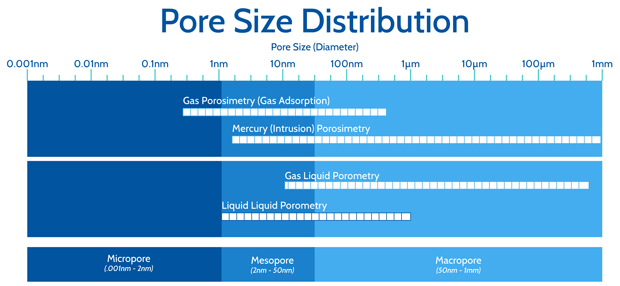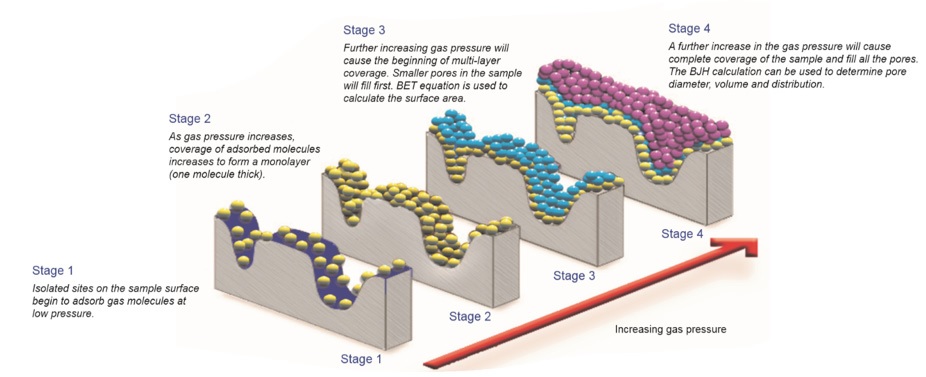Porosity Characterization
Derived from the Greek word ‘poros’ meaning passage, porosity is a critical parameter used to describe and quantify the internal structure of many materials of industrial interest. Porosity defines the ease with which fluids can travel through a solid, the extent and accessibility of internal surface area and relationships between strength and weight. Examples of products for which porosity is a performance-defining characteristic include: catalysts; construction materials; ceramics; pharmaceuticals; membranes and filters; active elements of batteries and fuel cells; and the finished components produced by metal manufacturing methods such as additive manufacturing (AM) and metal injection molding. Porosity characterization is equally essential for the effective exploitation of oil and gas bearing reservoirs.
Practical techniques used to investigate porosity include pycnometry, gas adsorption, mercury porosimetry and porometry. Mathematical manipulation of the resulting measurements enables characterization to varying degrees of detail, with alternative approaches optimal for different
materials and for analysis over different length scales.

Pycnometry can be used to learn the average porosity of a sample, calculated based on several different density measurements. Due to one of these methods being density measured using a powder, porosity measurement by pycnometry will not work with powder samples, but works well with solid materials.
Mercury porosimetry (otherwise known as mercury intrusion porosimetry) offers an unrivalled dynamic range for detailed investigation of the porosity of powders and solids. Providing rigorous characterization from the macroporous (pore size > 50 nm) down into the mesoporous region (pore size ~3nm) it is complementary to gas adsorption which extends to microporous materials.
Physical gas adsorption (Physisorption), the gold standard technique for measuring the surface area of a solid, can also be used to characterize porosity. Though slower than mercury porosimetry, gas adsorption offers more benign health and safety characteristics and, crucially, the ability to measure into the microporous region, to measure pore sizes less than 0.5 nm in size.

Micromeritics has published a whitepaper about porosity characterization. To download the paper for free, please visit Micromeritics’ website.
